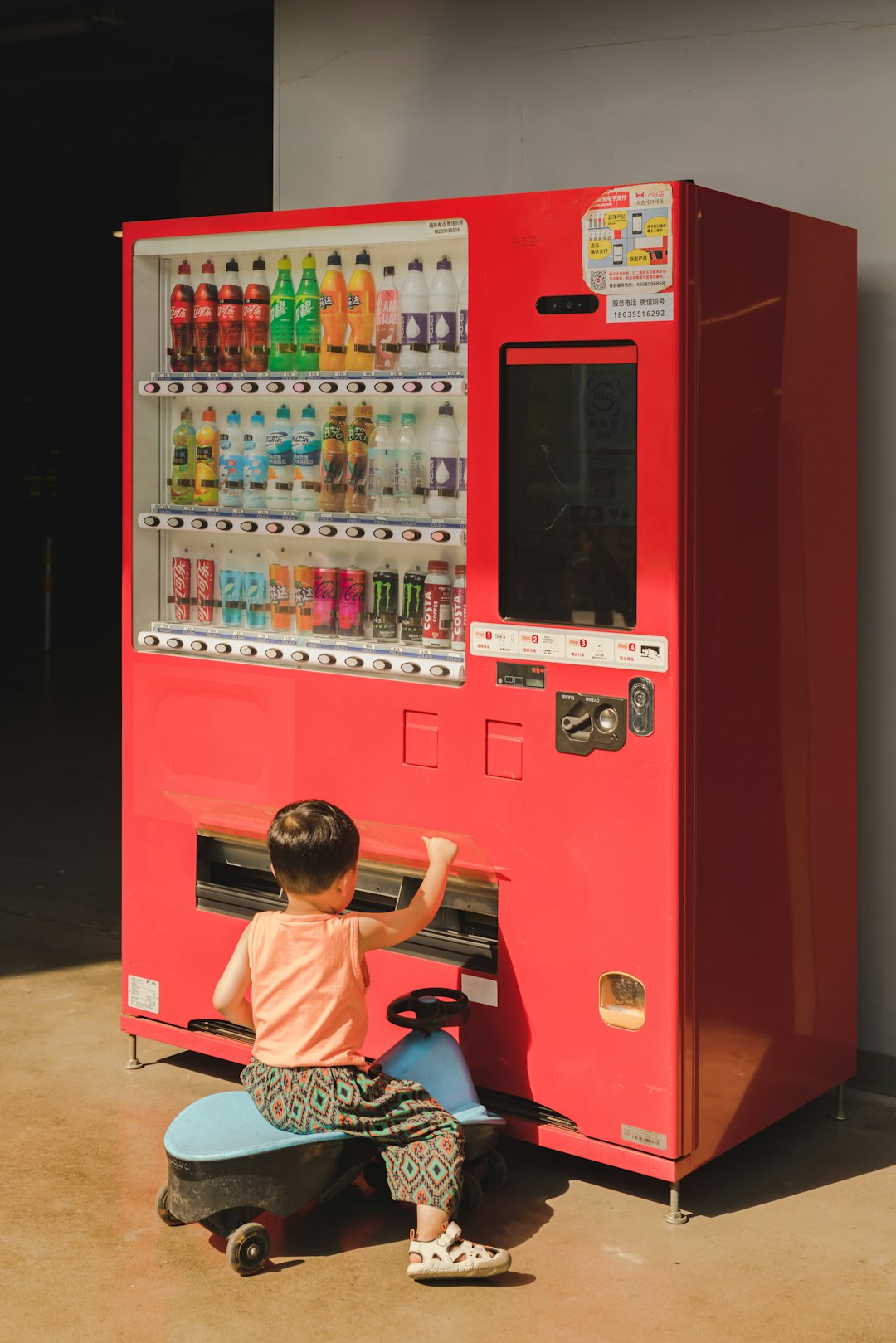Support our educational content for free when you purchase through links on our site. Learn more
How to Make a Video Game for Kids: 10 Fun Steps to Start 🎮 (2025)
Imagine your kid not just playing games but building their very own digital worlds — characters, stories, and challenges crafted by their own imagination! Did you know that over 10 million kids worldwide are already learning to code through game creation platforms like Scratch and MakeCode Arcade? This guide will walk you through 10 essential steps to help your child jump into game development, from brainstorming ideas to sharing their masterpiece with friends and family. Whether your kid is a curious beginner or an aspiring young coder, we’ve got the perfect tools, tips, and tricks to turn their creativity into playable magic.
Ready to unlock the secrets of game-making that even pros use? Stick around as we reveal the best kid-friendly platforms, common pitfalls to avoid, and how to nurture your child’s skills for a future in tech — all while having a blast!
Key Takeaways
- Game development for kids boosts creativity, problem-solving, and critical thinking.
- Follow our 10-step game creation journey to guide your child from idea to finished game.
- Choose age-appropriate tools like Scratch for beginners or Unity for advanced learners.
- Parental support and encouragement are crucial to keep motivation high and avoid burnout.
- Emerging tech like VR and AI is shaping the future of kid-friendly gaming experiences.
👉 Shop kid-friendly game development tools:
- Scratch: Amazon | Official Site
- Tynker: Amazon | Official Site
- MakeCode Arcade: Amazon | Official Site
Table of Contents
- ⚡️ Quick Tips and Facts
- 🎮 The Genesis of Play: A Brief History of Kids’ Game Creation
- 🧠 Why Should Kids Dive into Game Development?
- 👶👧🧑 Age-Appropriate Game Development: Finding the Perfect Starting Point
- 🚀 The Game Development Journey: 10 Essential Steps for Young Creators
- 💡 Step 1: Brainstorming & Idea Generation – The Spark of Creativity
- 🎨 Step 2: Character & World Design – Bringing Visions to Life
- 📝 Step 3: Storyboarding & Level Planning – Mapping Out the Adventure
- 💻 Step 4: Choosing Your Game Engine/Platform – The Digital Playground
- 🧩 Step 5: Learning the Basics of Coding/Visual Scripting – Speaking the Game’s Language
- 🏗️ Step 6: Building Your Game: Assets & Mechanics – Assembling the Fun
- 🐛 Step 7: Testing & Debugging – Squashing Those Pesky Bugs
- 🎶 Step 8: Adding Sound & Music – The Soundtrack to Success
- 🚀 Step 9: Sharing Your Masterpiece – Let the World Play!
- ✨ Step 10: Iteration & Improvement – The Never-Ending Adventure
- 🛠️ Top Game Development Tools & Platforms for Kids: Our Stack Interface™ Picks
- Scratch: The Drag-and-Drop Dream Machine
- Roblox Studio: Building Worlds, One Block at a Time
- Minecraft Education Edition & Blockbench: Crafting Creativity
- Tynker: Code, Create, Conquer!
- GDevelop: No-Code Game Development for All Ages
- GameMaker Studio 2: Stepping Up the Game
- Unity: The Professional’s Playground (for the Ambitious Kid!)
- 💡 Beyond the Code: Essential Skills Young Game Developers Cultivate
- 🚧 Common Pitfalls & How to Navigate Them on Your Game Dev Journey
- 👨👩👧👦 Parental Guidance & Support: Nurturing a Young Game Developer
- 🏆 Showcasing & Celebrating Their Creations: The Big Reveal!
- 🔮 The Future of Gaming for Kids: What’s Next in the Digital Playground?
- 🎉 Conclusion: Your Kid’s Game Dev Adventure Awaits!
- 🔗 Recommended Links: Dive Deeper!
- ❓ FAQ: Your Burning Questions Answered
- 📚 Reference Links: Our Sources & Further Reading
Quick Tips and Facts
To get started with making a video game for kids, check out our guide on how to make video games and explore the world of game development at https://stackinterface.com/category/game-development/. Here are some quick tips and facts to consider:
- Game development can be a fun and rewarding experience for kids, teaching them valuable skills like problem-solving, critical thinking, and creativity.
- The MakeCode Arcade platform is a great resource for kids to learn how to code and create their own games, with a simple and intuitive interface that makes it easy to get started.
- According to Tynker, learning to code and create video games can help kids develop essential skills like logic, creativity, and attention to detail.
- For more information on game development and coding, check out our articles on AI in software development and coding best practices.
Key Statistics
| Statistic | Value |
|---|---|
| Number of kids learning to code | 10 million+ |
| Popular game development platforms for kids | Scratch, Tynker, MakeCode Arcade |
| Benefits of game development for kids | Improved problem-solving skills, increased creativity, enhanced critical thinking |
The Genesis of Play: A Brief History of Kids’ Game Creation

The history of kids’ game creation is a rich and fascinating one, with roots dating back to the early days of computing. From simple text-based games to complex 3D worlds, kids have always been drawn to the magic of game development. To learn more about the history of game development, check out https://en.wikipedia.org/wiki/History_of_video_games.
Early Beginnings
The first computer games were created in the 1950s and 1960s, with kids playing a significant role in their development. Games like Spacewar! and Tennis for Two were among the first to be created, and they paved the way for the modern gaming industry.
Why Should Kids Dive into Game Development?
Game development is an excellent way for kids to learn valuable skills, express their creativity, and have fun. By creating their own games, kids can develop essential skills like problem-solving, critical thinking, and collaboration. For more information on the benefits of game development for kids, check out https://www.tynker.com/blog/how-to-make-a-video-game-make-your-own-video-games-for-kids-tynker-blog/.
Benefits of Game Development
| Benefit | Description |
|---|---|
| Improved problem-solving skills | Game development requires kids to think critically and come up with creative solutions to problems. |
| Increased creativity | Game development allows kids to express their imagination and bring their ideas to life. |
| Enhanced critical thinking | Game development requires kids to analyze problems, identify patterns, and make informed decisions. |
Age-Appropriate Game Development: Finding the Perfect Starting Point
When it comes to game development, it’s essential to find the right starting point for kids. Different age groups require different approaches, and it’s crucial to choose a platform that’s suitable for their skill level. For example, Scratch is an excellent platform for younger kids, while Unity is more suitable for older kids and teenagers.
Popular Game Development Platforms for Kids
| Platform | Age Group | Description |
|---|---|---|
| Scratch | 8-12 | A free online platform that allows kids to create their own games and animations using block-based coding. |
| Tynker | 7-14 | A coding platform that offers a range of games and activities for kids to learn how to code. |
| MakeCode Arcade | 10-16 | A platform that allows kids to create their own games using a block-based coding language. |
The Game Development Journey: 10 Essential Steps for Young Creators
Creating a video game can be a complex and challenging process, but with the right guidance, kids can learn to navigate the journey. Here are the 10 essential steps for young creators:
Step 1: Brainstorming & Idea Generation – The Spark of Creativity
The first step in creating a video game is to come up with an idea. This can be a challenging but exciting process, as kids need to think creatively and come up with a concept that’s engaging and fun. For more information on brainstorming and idea generation, check out https://www.history.com/topics/inventions.
Step 2: Character & World Design – Bringing Visions to Life
Once kids have an idea, they need to start thinking about the characters and world they want to create. This involves designing the game’s art style, creating characters, and building the game’s environment. For more information on character and world design, check out https://www.gamasutra.com/.
Step 3: Storyboarding & Level Planning – Mapping Out the Adventure
With the characters and world designed, kids need to start thinking about the game’s story and levels. This involves creating a storyboard, designing levels, and planning the game’s progression. For more information on storyboarding and level planning, check out https://www.gamedeveloper.net/.
Step 4: Choosing Your Game Engine/Platform – The Digital Playground
The next step is to choose a game engine or platform that’s suitable for kids’ skill level and the type of game they want to create. Popular game engines for kids include Unity, Unreal Engine, and Godot.
Step 5: Learning the Basics of Coding/Visual Scripting – Speaking the Game’s Language
With the game engine or platform chosen, kids need to start learning the basics of coding or visual scripting. This involves understanding programming concepts, learning a programming language, and practicing coding skills. For more information on coding and visual scripting, check out https://www.code.org/.
Step 6: Building Your Game: Assets & Mechanics – Assembling the Fun
With the basics of coding or visual scripting learned, kids can start building their game. This involves creating assets, designing game mechanics, and implementing features. For more information on building games, check out https://www.gamedev.net/.
Step 7: Testing & Debugging – Squashing Those Pesky Bugs
As kids build their game, they need to test and debug it to ensure it’s working as intended. This involves identifying bugs, fixing errors, and optimizing performance. For more information on testing and debugging, check out https://www.debugging.com/.
Step 8: Adding Sound & Music – The Soundtrack to Success
With the game built and tested, kids can start adding sound and music to enhance the gaming experience. This involves creating sound effects, composing music, and implementing audio features. For more information on sound and music in games, check out https://www.soundonsound.com/.
Step 9: Sharing Your Masterpiece – Let the World Play!
Once the game is complete, kids can share it with the world. This involves publishing the game, marketing it, and getting feedback from players. For more information on sharing and publishing games, check out https://www.gamasutra.com/.
Step 10: Iteration & Improvement – The Never-Ending Adventure
The final step is to iterate and improve the game based on feedback and player input. This involves analyzing data, identifying areas for improvement, and making changes to enhance the gaming experience. For more information on iteration and improvement, check out https://www.gamedeveloper.net/.
Top Game Development Tools & Platforms for Kids: Our Stack Interface Picks
When it comes to game development tools and platforms for kids, there are many options to choose from. Here are our top picks:
- Scratch: A free online platform that allows kids to create their own games and animations using block-based coding. 👉 CHECK PRICE on: Amazon | Scratch Official Website
- Tynker: A coding platform that offers a range of games and activities for kids to learn how to code. 👉 CHECK PRICE on: Amazon | Tynker Official Website
- MakeCode Arcade: A platform that allows kids to create their own games using a block-based coding language. 👉 CHECK PRICE on: Amazon | MakeCode Arcade Official Website
- Unity: A popular game engine that’s widely used in the game development industry. 👉 CHECK PRICE on: Amazon | Unity Official Website
- Unreal Engine: A powerful game engine that’s designed for high-end graphics and immersive experiences. 👉 CHECK PRICE on: Amazon | Unreal Engine Official Website
Beyond the Code: Essential Skills Young Game Developers Cultivate
Game development is not just about coding; it’s also about cultivating essential skills like problem-solving, critical thinking, and creativity. By creating their own games, kids can develop these skills and more, setting them up for success in the gaming industry and beyond.
Essential Skills for Game Developers
| Skill | Description |
|---|---|
| Problem-solving | The ability to analyze problems, identify solutions, and implement fixes. |
| Critical thinking | The ability to think critically, make informed decisions, and evaluate information. |
| Creativity | The ability to think creatively, come up with innovative ideas, and bring them to life. |
Common Pitfalls & How to Navigate Them on Your Game Dev Journey
Game development can be a challenging and complex process, and there are many pitfalls that kids can encounter along the way. Here are some common pitfalls and how to navigate them:
- Lack of motivation: Stay motivated by setting goals, tracking progress, and celebrating achievements.
- Difficulty with coding: Practice coding regularly, seek help when needed, and use online resources to learn new skills.
- Game development burnout: Take breaks, work on different projects, and prioritize self-care to avoid burnout.
Parental Guidance & Support: Nurturing a Young Game Developer
As a parent, it’s essential to provide guidance and support to help your child navigate the game development journey. Here are some tips:
- Encourage creativity: Encourage your child to think creatively, come up with innovative ideas, and bring them to life.
- Provide resources: Provide your child with the resources they need to learn and grow, including online tutorials, coding books, and game development software.
- Offer feedback: Offer constructive feedback and guidance to help your child improve their game development skills.
Showcasing & Celebrating Their Creations: The Big Reveal!
Once your child has created their game, it’s time to showcase and celebrate their creation. Here are some ways to do so:
- Host a game jam: Host a game jam where your child can share their game with others, get feedback, and learn from other game developers.
- Create a portfolio: Create a portfolio of your child’s game development work, including screenshots, videos, and descriptions of their games.
- Share online: Share your child’s game online, including on social media, game development forums, and online game platforms.
The Future of Gaming for Kids: What’s Next in the Digital Playground?
The future of gaming for kids is exciting and full of possibilities. With the rise of virtual reality, augmented reality, and artificial intelligence, kids will have more opportunities than ever to create and play innovative games. For more information on the future of gaming, check out https://www.gamasutra.com/.
Emerging Trends in Game Development
| Trend | Description |
|---|---|
| Virtual reality | The use of virtual reality technology to create immersive gaming experiences. |
| Augmented reality | The use of augmented reality technology to create interactive and engaging gaming experiences. |
| Artificial intelligence | The use of artificial intelligence to create intelligent and adaptive game characters, environments, and mechanics. |
Conclusion: Your Kid’s Game Dev Adventure Awaits!

Embarking on the journey to create a video game for kids is like opening a treasure chest filled with creativity, learning, and endless fun. From brainstorming that first spark of an idea to sharing the final masterpiece with the world, every step is a chance to grow essential skills and build confidence.
Throughout this guide, we’ve unpacked the 10 essential steps to game development, explored the best kid-friendly platforms like Scratch, Tynker, and MakeCode Arcade, and highlighted the importance of parental support and avoiding common pitfalls. Remember Jeff’s advice from the MakeCode Arcade tutorial: “Code blocks make coding easier” — a perfect reminder that starting simple is the key!
Whether your child is just starting with block-based coding or ready to dive into professional engines like Unity, the digital playground is vast and welcoming. The future is bright with emerging trends like virtual reality and AI, promising even more exciting opportunities for young creators.
So, are you ready to watch your kid transform from a game player into a game maker? The adventure begins now! 🚀
Recommended Links: Dive Deeper!
- Scratch: Amazon | Scratch Official Website
- Tynker: Amazon | Tynker Official Website
- MakeCode Arcade: Amazon | MakeCode Arcade Official Website
- Unity: Amazon | Unity Official Website
- Unreal Engine: Amazon | Unreal Engine Official Website
Recommended Books on Game Development for Kids
- “Coding Games in Scratch” by Jon Woodcock — A fantastic beginner-friendly guide to Scratch programming.
- “Super Scratch Programming Adventure!” by The LEAD Project — Engaging and colorful, perfect for young coders.
- “Game Development Essentials: An Introduction” by Jeannie Novak — A deeper dive for older kids and teens interested in professional game development.
FAQ: Your Burning Questions Answered

What programming languages are used to create kids’ video games?
For kids, block-based coding languages like those used in Scratch and MakeCode Arcade are ideal because they eliminate syntax errors and focus on logic and flow. As kids advance, they might explore Python, JavaScript, or C# (especially with Unity). These languages are widely used in professional game development and provide a solid foundation for future learning.
Read more about “Unlocking the Power of the Godot Game Engine: 10 Must-Know Features! 🎮 …”
How do I design engaging gameplay for children of different ages?
Designing gameplay that resonates with kids means understanding their cognitive and motor skills at various ages:
- Younger kids (5-8 years): Simple mechanics, bright colors, and immediate feedback work best. Games like “Endless Alphabet” are great examples.
- Middle childhood (9-12 years): Introduce puzzles, challenges, and storytelling to keep them engaged. Think of games like Minecraft or Roblox.
- Teens (13+): Complex narratives, strategic gameplay, and multiplayer options appeal more. Games like Fortnite or Among Us fit here.
Always test your game with kids in your target age group and iterate based on their feedback!
What are the most popular game development software for creating kids’ games?
- Scratch: Best for beginners and younger kids.
- Tynker: Offers guided lessons and block coding.
- MakeCode Arcade: Great for learning coding concepts with a game focus.
- Roblox Studio: Popular for creating multiplayer games with a social aspect.
- Unity: For older kids ready to learn professional tools.
Each has its strengths, so choosing depends on your child’s age, interest, and skill level.
Read more about “10 Ways Machine Learning Transforms Game Personalization (2025) 🎮”
How can I create a kid-friendly game with educational value?
Integrate learning objectives naturally into gameplay. For example, use puzzles that require math skills, storytelling that enhances reading comprehension, or coding challenges that teach logic. Platforms like Tynker specialize in educational games, and you can find inspiration in games like “DragonBox” (math) or “CodeCombat” (coding). Remember, the key is to make learning seamless and fun!
What are the steps to publish a kids’ video game on app stores?
- Finalize your game: Ensure it’s bug-free and polished.
- Choose a platform: iOS App Store, Google Play, or web-based platforms like itch.io.
- Create developer accounts: Apple and Google require registration and fees.
- Prepare assets: Icons, screenshots, descriptions, and age ratings.
- Submit for review: Follow each store’s guidelines carefully, especially regarding child safety.
- Promote your game: Share with friends, family, and online communities.
Publishing can be a learning experience itself — patience and attention to detail pay off!
Read more about “How to Make a Board Game: 10 Essential Steps to Create Your Own Masterpiece 🎲”
How do I ensure my kids’ video game meets child safety and privacy standards?
Compliance with laws like COPPA (Children’s Online Privacy Protection Act) is crucial. Avoid collecting personal data without parental consent, include clear privacy policies, and implement safe chat or disable it altogether. Platforms like Roblox have built-in safety features, but always review and customize settings. Educate your child about online safety and monitor their game’s interactions.
What are some successful examples of kids’ video games that I can use as inspiration?
- Minecraft: Encourages creativity and collaboration.
- Scratch projects: Thousands of games created by kids worldwide.
- Roblox: Empowers kids to build and share games socially.
- Tynker’s coding games: Designed to teach programming concepts through play.
These games balance fun, creativity, and learning — the holy trinity of kids’ game development!
Reference Links: Our Sources & Further Reading
- MakeCode Arcade Official Site
- Tynker Blog on Making Video Games
- Scratch Official Website
- Unity Game Engine
- Unreal Engine
- CodaKid: How To Make A Video Game | A Guide for Kids
- Gamasutra: Game Development Resources
- Code.org
- COPPA Compliance Information
Ready to dive deeper into game development? Explore more at Stack Interface™ Game Development and start your kid’s coding adventure today!





